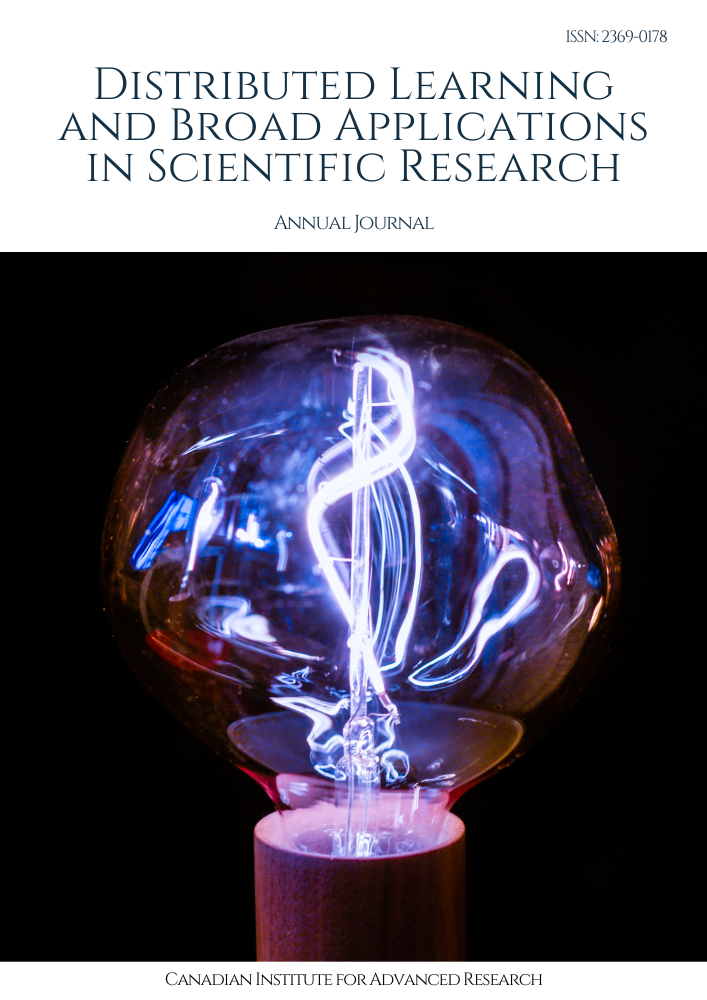Machine Learning-Driven Vulnerability Detection in Cybersecurity
Leveraging Computer Vision for Threat Identification
Keywords:
machine learning, computer vision, cybersecurity, vulnerability detection, threat identification, convolutional neural networks, real-time monitoringAbstract
As cybersecurity threats become increasingly sophisticated, traditional methods of vulnerability detection often fall short in effectively identifying and mitigating risks. This paper explores the innovative application of computer vision techniques integrated with machine learning algorithms for detecting vulnerabilities and threats in cybersecurity systems. By analyzing visual data derived from network behaviors and system anomalies, this approach offers a more dynamic and comprehensive method of threat identification. We discuss the underlying technologies and methodologies, including the deployment of convolutional neural networks (CNNs) and other deep learning models tailored for cybersecurity applications. Case studies illustrating the successful implementation of these techniques are presented, highlighting their effectiveness in identifying threats in real-time. Furthermore, we address the challenges and limitations of this approach and propose future directions for research to enhance the efficacy of machine learning-driven vulnerability detection. This study ultimately aims to contribute to the advancement of cybersecurity methodologies, providing insights for researchers and practitioners alike.
Downloads
References
Gayam, Swaroop Reddy. "Deep Learning for Predictive Maintenance: Advanced Techniques for Fault Detection, Prognostics, and Maintenance Scheduling in Industrial Systems." Journal of Deep Learning in Genomic Data Analysis 2.1 (2022): 53-85.
Yellepeddi, Sai Manoj, et al. "AI-Powered Intrusion Detection Systems: Real-World Performance Analysis." Journal of AI-Assisted Scientific Discovery 4.1 (2024): 279-289.
Nimmagadda, Venkata Siva Prakash. "Artificial Intelligence for Supply Chain Visibility and Transparency in Retail: Advanced Techniques, Models, and Real-World Case Studies." Journal of Machine Learning in Pharmaceutical Research 3.1 (2023): 87-120.
Putha, Sudharshan. "AI-Driven Predictive Maintenance for Smart Manufacturing: Enhancing Equipment Reliability and Reducing Downtime." Journal of Deep Learning in Genomic Data Analysis 2.1 (2022): 160-203.
Sahu, Mohit Kumar. "Advanced AI Techniques for Predictive Maintenance in Autonomous Vehicles: Enhancing Reliability and Safety." Journal of AI in Healthcare and Medicine 2.1 (2022): 263-304.
Kondapaka, Krishna Kanth. "AI-Driven Predictive Maintenance for Insured Assets: Advanced Techniques, Applications, and Real-World Case Studies." Journal of AI in Healthcare and Medicine 1.2 (2021): 146-187.
Kasaraneni, Ramana Kumar. "AI-Enhanced Telematics Systems for Fleet Management: Optimizing Route Planning and Resource Allocation." Journal of AI in Healthcare and Medicine 1.2 (2021): 187-222.
Pattyam, Sandeep Pushyamitra. "Artificial Intelligence in Cybersecurity: Advanced Methods for Threat Detection, Risk Assessment, and Incident Response." Journal of AI in Healthcare and Medicine 1.2 (2021): 83-108.
Alluri, Venkat Rama Raju, et al. "Automated Testing Strategies for Microservices: A DevOps Approach." Distributed Learning and Broad Applications in Scientific Research 4 (2018): 101-121.
D. Bahdanau, K. Cho, and Y. Bengio, "Neural machine translation by jointly learning to align and translate," in Proceedings of the 3rd International Conference on Learning Representations (ICLR), 2015.
Machireddy, Jeshwanth Reddy. "Assessing the Impact of Medicare Broker Commissions on Enrollment Trends and Consumer Costs: A Data-Driven Analysis." Journal of AI in Healthcare and Medicine 2.1 (2022): 501-518.
J. Devlin, M. W. Chang, K. Lee, and K. Toutanova, "BERT: Pre-training of deep bidirectional transformers for language understanding," in Proceedings of the 2019 Conference of the North American Chapter of the Association for Computational Linguistics: Human Language Technologies, 2019, pp. 4171-4186.
A. Vaswani et al., "Attention is all you need," in Proceedings of the 31st International Conference on Neural Information Processing Systems (NeurIPS), 2017, pp. 5998-6008.
Downloads
Published
Issue
Section
License

This work is licensed under a Creative Commons Attribution-NonCommercial-ShareAlike 4.0 International License.
License Terms
Ownership and Licensing:
Authors of research papers submitted to Distributed Learning and Broad Applications in Scientific Research retain the copyright of their work while granting the journal certain rights. Authors maintain ownership of the copyright and have granted the journal a right of first publication. Simultaneously, authors agree to license their research papers under the Creative Commons Attribution-NonCommercial-ShareAlike 4.0 International (CC BY-NC-SA 4.0) License.
License Permissions:
Under the CC BY-NC-SA 4.0 License, others are permitted to share and adapt the work, as long as proper attribution is given to the authors and acknowledgement is made of the initial publication in the journal. This license allows for the broad dissemination and utilization of research papers.
Additional Distribution Arrangements:
Authors are free to enter into separate contractual arrangements for the non-exclusive distribution of the journal's published version of the work. This may include posting the work to institutional repositories, publishing it in journals or books, or other forms of dissemination. In such cases, authors are requested to acknowledge the initial publication of the work in this journal.
Online Posting:
Authors are encouraged to share their work online, including in institutional repositories, disciplinary repositories, or on their personal websites. This permission applies both prior to and during the submission process to the journal. Online sharing enhances the visibility and accessibility of the research papers.
Responsibility and Liability:
Authors are responsible for ensuring that their research papers do not infringe upon the copyright, privacy, or other rights of any third party. Scientific Research Canada disclaims any liability or responsibility for any copyright infringement or violation of third-party rights in the research papers.
If you have any questions or concerns regarding these license terms, please contact us at editor@dlabi.org.



